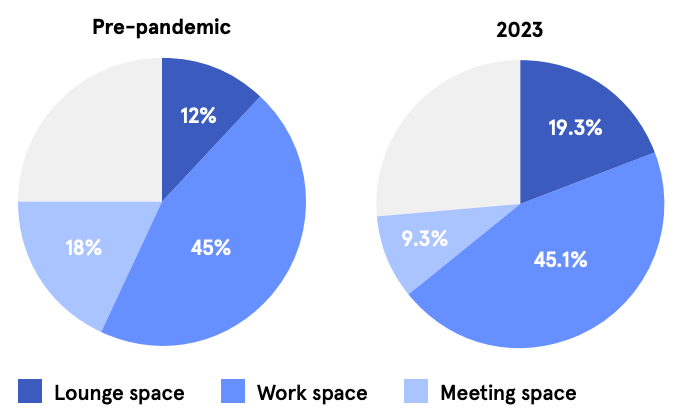Fully in-person workers feel less connected to their workplace culture compared to their remote and hybrid colleagues, new Gallup data show:

The Gallup research, collected over the course of this past quarter, undermines an often-cited argument among executives bearish on flexible work: that culture is necessarily created and strengthened through face time.
The data also suggest that many employers likely aren’t using the office—which is best treated “as a tool and not a destination,” as Harvard Business School professor Tsedal Neely has put it—to its full advantage.
The two new pieces of research below offer insight on how employers can do just that, giving workers the return-to-office experience they really want and ensuring that the time they spend there achieves a greater purpose.
1. What employers are getting wrong about RTO incentives
Morning Consult’s latest State of Workers report, released last week, found that overall sentiment for hybrid work is trending upward from last year, while workers’ preference for fully remote work is on the decline:

The rising positivity around hybrid arrangements runs counter to a common problem we’ve heard in recent months: that even organizations that have long ago worked out the details of their hybrid policy—and incorporated research-backed best practices, such as deciding in-person schedules at the team level—still struggle with compliance.
The Morning Consult survey highlights one likely reason for this disconnect: Employers are emphasizing the wrong things in their attempts to get more workers to the office. Just 42% of survey respondents said they would be swayed to go into the office more if their colleagues also worked more in person.
Join Charter Pro today to read the rest of this story.
2. A framework for making the office a more effective collaboration tool
Meeting space within offices currently represents just half the footprint it did pre-pandemic, according to recent research from WeWork identifying trends in office design among member companies:

It’s an interesting wrinkle to a theme we’ve heard repeatedly: Employers looking to draw (or force) workers back into an office often cite team collaboration as a key reason for doing so. We recently spoke with Ebbie Wisecarver, WeWork’s chief design officer, who noted that she counsels employers to think about collaboration—and connection, that other often-cited reason for encouraging in-person work—in a more nuanced way. The organizations that most successfully use their office space for both purposes, Wisecarver told us, do so by thinking along two lines: structured and unstructured.
Here’s an example of what that framework might look like:


Three other takeaways from Wisecarver’s research and our conversation:
Organizations should assess their workplace design choices quarterly. That includes both quantitative measures, such as meeting room usage and demand for other bookable spaces, and qualitative feedback, “just getting an understanding from the team on how they feel in the space, how they experience the space,” Wisecarver says. To make that qualitative feedback actionable, ask granular questions in addition to more global ones: How do employees feel about the lighting? The furniture look and comfort? The density of seating? The noise level in various parts of the office?
Join Charter Pro today to read the rest of this story.
